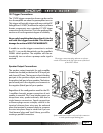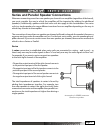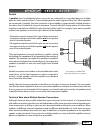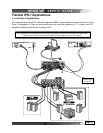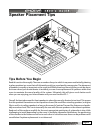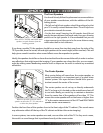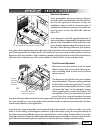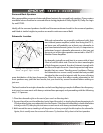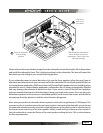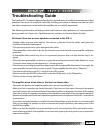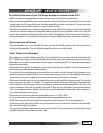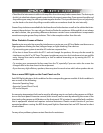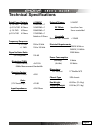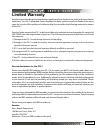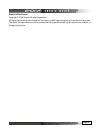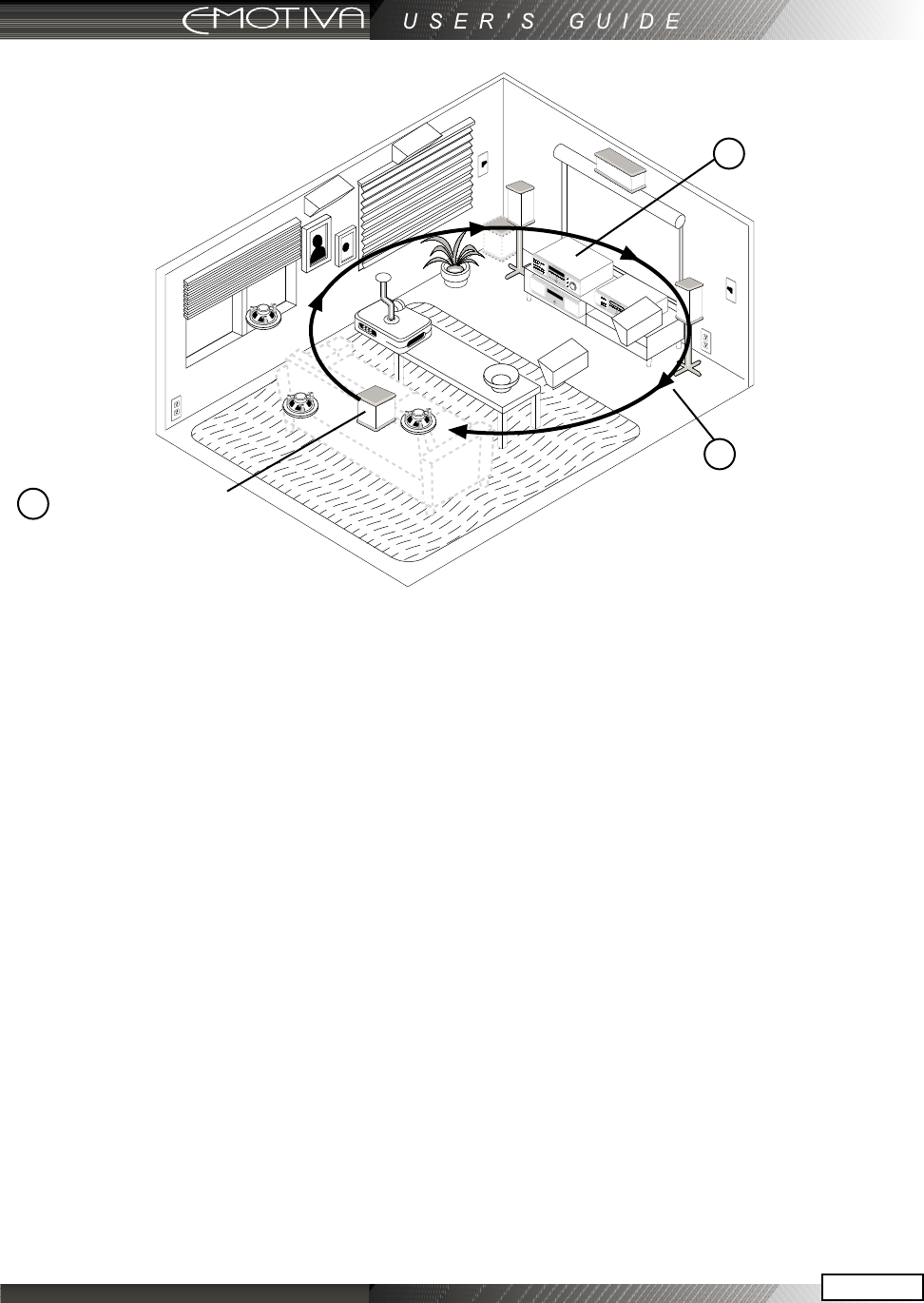
Page 24
Page 25
Notice where in the room the bass output from the subwoofer sounds the loudest. Shut things down
and install the subwoofer there. This is the best position for the subwoofer. The bass will sound the
best when you are sitting in your normal listening position.
If your subwoofer seems to sound best when it is near the front speakers (often the case), keep in
mind that most television sets may not react well to the subwoofer if it is not built specically for use
in a home theater application. While most front Left/Center/Right speakers do have shielding when
intended for use in a home theater application, subwoofers are not always magnetically shielded
and may damage the television if placed too close. If you want to check if this will be a problem,
select an unused video input on the television to bring up a single color screen. If you see any color
distortion anywhere on the screen, an unshielded speaker is too close to the screen and should be
moved away from the television until the color distortion disappears.
Note - most powered home subwoofers feature a phase control with a range between 0-180 degrees. This
is present so that in situations where the optimum location is not particularly desirable, you can locate
the subwoofer elsewhere nearby and make a slight adjustment to the phase so that is sound arrives to
the listener at the same time as the other speakers. Ideally, sound arriving at the same time is what al-
lows the subwoofer to create the illusion of the main speakers making the bass. This is what enhances
the listening experience.
Place the subwoofer
in the listening
position
Play a test
tone or low
bass music
Walk around the room and see
where the bass has the best
performance. That’s where your
subwoofer belongs!
3
2
1



